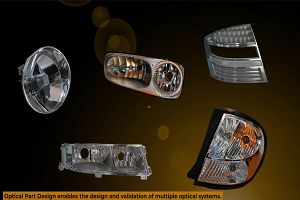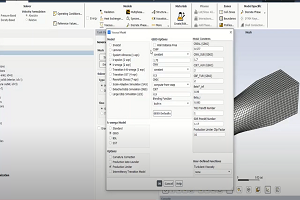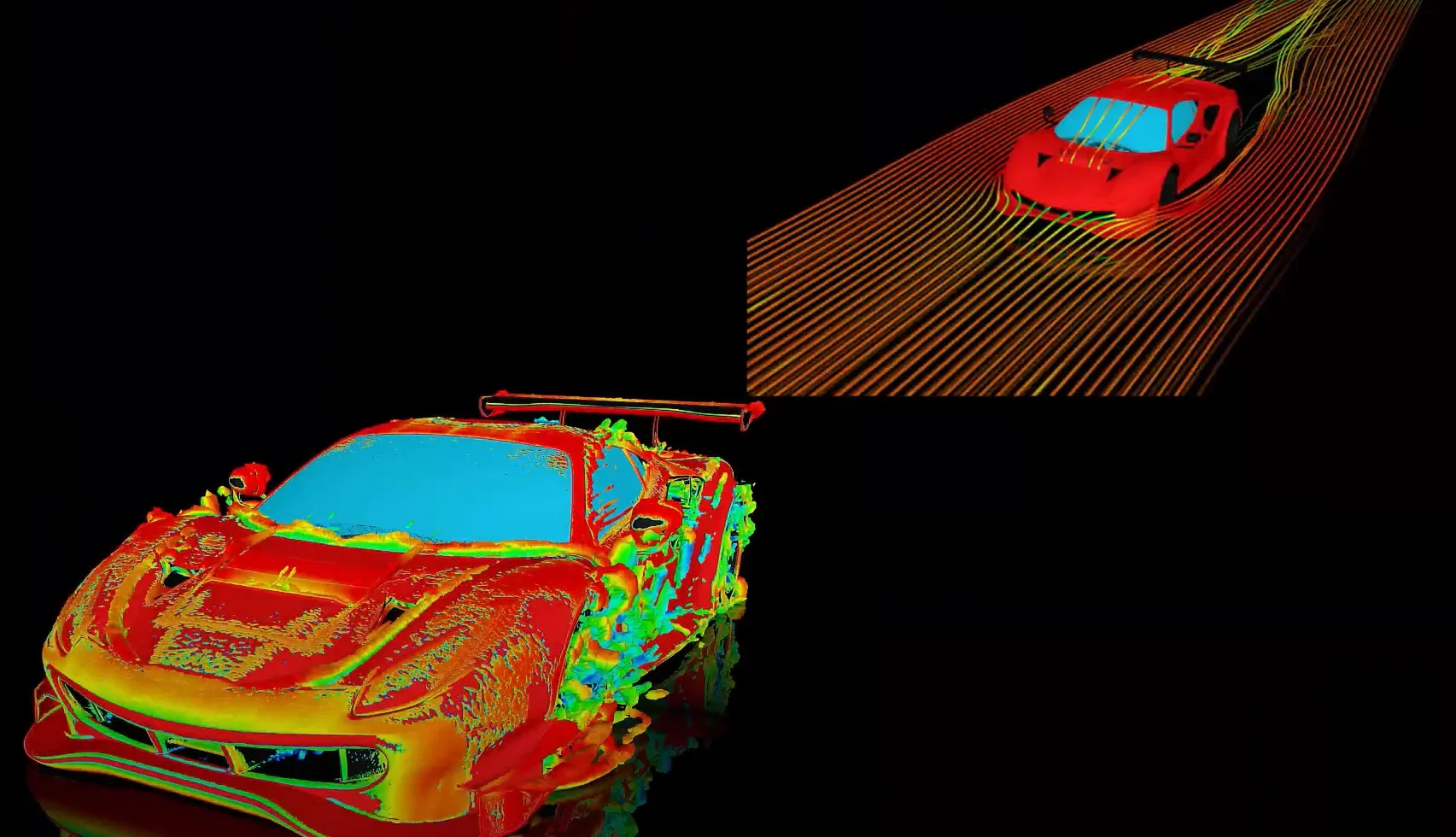How to evaluate the difference of a local variable to its circumferential averaged value on a Turbo Surface?
Tagged: 11, cfd-post, fluid-dynamics, General, rotating-machinery
-
-
March 17, 2023 at 8:58 am
 FAQParticipant
FAQParticipantThis can be achieved with the following steps: • Initialize the turbo components • Generate a Turbo Surface: Location > Turbo Surface • Define the Turbo Surface as required, e.g.: o Geometry > Method > Constant Streamwise Location o Color – Variable: Velocity – Circ Average: Length – Max Samples: 100 o Apply • When you click on “…†a new variable named “Velocity LCA on Turbo Surface 1†occurs * • Create an Expression: Insert > Expression > exp1 = Velocity – Velocity LCA on Turbo Surface 1 > Apply • Create a Variable: Insert > Variable > var1 > Expression: exp1 > Apply • Go to the Turbo Surface again o Variable: var1 o Circ Average: None o Apply The difference is now displayed on the turbo surface. * The abbreviation LCA means circumferentail averaging by length: When the Circ. Average setting is set to Length, circumferential averaging of values at a sampling point is carried out internally by forming a circular arc, centered about the turbo axis, passing through the sampling point. Values are interpolated to n equally-spaced locations along the arc, using values from nearby nodes, where n is a number that is inversely proportional to the mesh length scale, and limited by the Max. Samples setting. The n values are then averaged in order to obtain a single, circumferentially-averaged value for the sampling point.
-


Introducing Ansys Electronics Desktop on Ansys Cloud
The Watch & Learn video article provides an overview of cloud computing from Electronics Desktop and details the product licenses and subscriptions to ANSYS Cloud Service that are...

How to Create a Reflector for a Center High-Mounted Stop Lamp (CHMSL)
This video article demonstrates how to create a reflector for a center high-mounted stop lamp. Optical Part design in Ansys SPEOS enables the design and validation of multiple...

Introducing the GEKO Turbulence Model in Ansys Fluent
The GEKO (GEneralized K-Omega) turbulence model offers a flexible, robust, general-purpose approach to RANS turbulence modeling. Introducing 2 videos: Part 1 provides background information on the model and a...

Postprocessing on Ansys EnSight
This video demonstrates exporting data from Fluent in EnSight Case Gold format, and it reviews the basic postprocessing capabilities of EnSight.

- How to overcome the model information incompatible with incoming mesh error?
- Is there a way to get the volume of a register using expression ?
- Skewness in ANSYS Meshing
- What are the requirements for an axisymmetric analysis?
- What are pressure-based solver vs. density-based solver in FLUENT?
- How to create and execute a FLUENT journal file?
- How to get information about mesh cell count and cell types in Fluent?
- What is a .wbpz file and how can I use it?
- How can I Export and import boxes / Systems from one Workbench Project to another?
- ANSYS Fluent: Introduction to the GEKO Turbulence Model Part I

© 2025 Copyright ANSYS, Inc. All rights reserved.

